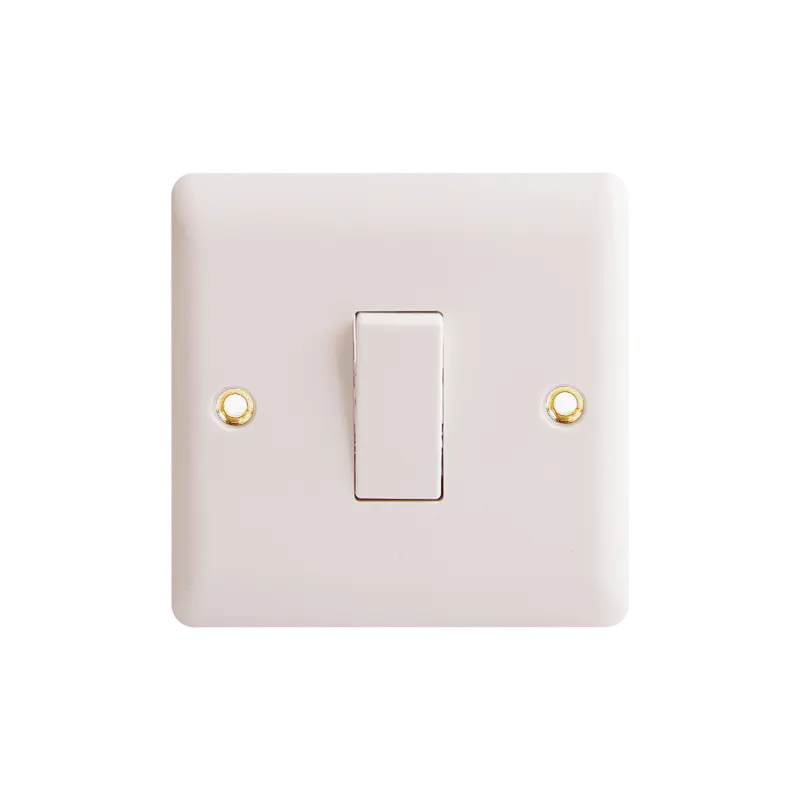When fitting light switches and sockets in your home, you have to be aware of how they work. You can purchase wiring kits, covers and instructions from DIY outlets. Before you begin, it's a good idea to learn as much as you can about the inner workings of the switches. There are different kinds of light switches, with each having different inner workings. For example, a plastic switch has a faceplate and a mounting box, while metal switches are more complex.
Styles
There are many different styles of light switches and sockets that are available. You can choose the one that matches the interior of your home. You can also choose a switch with a contrasting finish to the one you have in your home. You can also choose from various finishes such as polished brass and brushed burnished brass.
Single-pole switches have two brass terminal screws and a toggle labeled ON and OFF. They operate by switching one light or one outlet. The switch itself requires two wires: a black and white wire. A green ground screw is also attached. This style of switch is ideal for small rooms.
Some light switches are dimmable. Others are designed to blend in with the wall. They may also have safety features such as detecting movement.
Functions
Light switches and sockets are used to control the power flowing to a light bulb. Depending on the location of the light, you can use either a toggle or a slide switch. Toggle switches operate by opening and closing the contacts. Toggle switches are usually located in the base of a lamp. Rocker switches, on the other hand, are operated by a lever or a seesaw action.
Besides functionality, sockets and switches can also be decorative. While some switch styles become outdated within a few years, others are timeless and remain popular for decades. Toggle switches are one of these timeless designs that will never go out of style. The type of plate that is used on a light switch can also have an impact on the overall look of the room. Screwed plates tend to look cheap, while screwless finishes are considered classy.
Light switches can either be single or multi-pole, indoor or outdoor, and they may include dimmer controls and other features. Some models may also offer weather, security, or environmental protection. Light switches are typically used to control the circuit feeding lamps in a residential or light commercial system. In some cases, they may also be used in flashlights and vehicles.
Colors
Matching socket and light switch colors is an essential part of decorating your home. Different colors and finishes can add interest and ornamentation to the environment. Consider matching the switches and sockets to the colour of the walls, doors and baseboards in your home. This will create a harmonious look. However, be careful when choosing the colors for the switches and sockets.
The color of your switch and socket will depend on your lighting needs. Most light switches and sockets are white or ivory, but you can find some with darker finishes. Copper, bronze, and black are also good choices. Lighter-coloured switch plates will work best in brighter rooms, while darker ones can blend in with darker rooms. Black or grey-plated sockets are considered accent assets, but can also be used to enhance darker areas of the home.
Choosing the correct color for sockets and switches can be a challenging task. You must consider long-term appeal, complementing plates, and dramatic effect before making the final decision. If your lighting installation is complex, grey switches and sockets will be the best choice.
Installation
If you're replacing an existing light fixture, it's important to properly connect the wires. To do this, unscrew the back of the switch and remove the faceplate. Next, unscrew the screws that hold the switch to the wall. Connect the two wires, one to each side of the switch, then screw the switch and the faceplate back together. If necessary, you can use electrical tape to identify the common and neutral wires.
Installing a light switch is a straightforward job, but you should take precautions to ensure the safety of the circuit. If you're not a qualified electrician, it is advisable to hire a professional electrician. You will need to understand the local Building Regulations and be aware of any safety issues. In case of doubt, you can also consult a registered electrical certification scheme.
Changing light switches is a great way to update your home's look and function. Many light fittings come with dimmer capabilities or motion sensors. Others come with single or double switches. While this might be tempting, the process isn't always the easiest and it requires additional work. A professional electrician can help you convert light fittings into any type you need.
